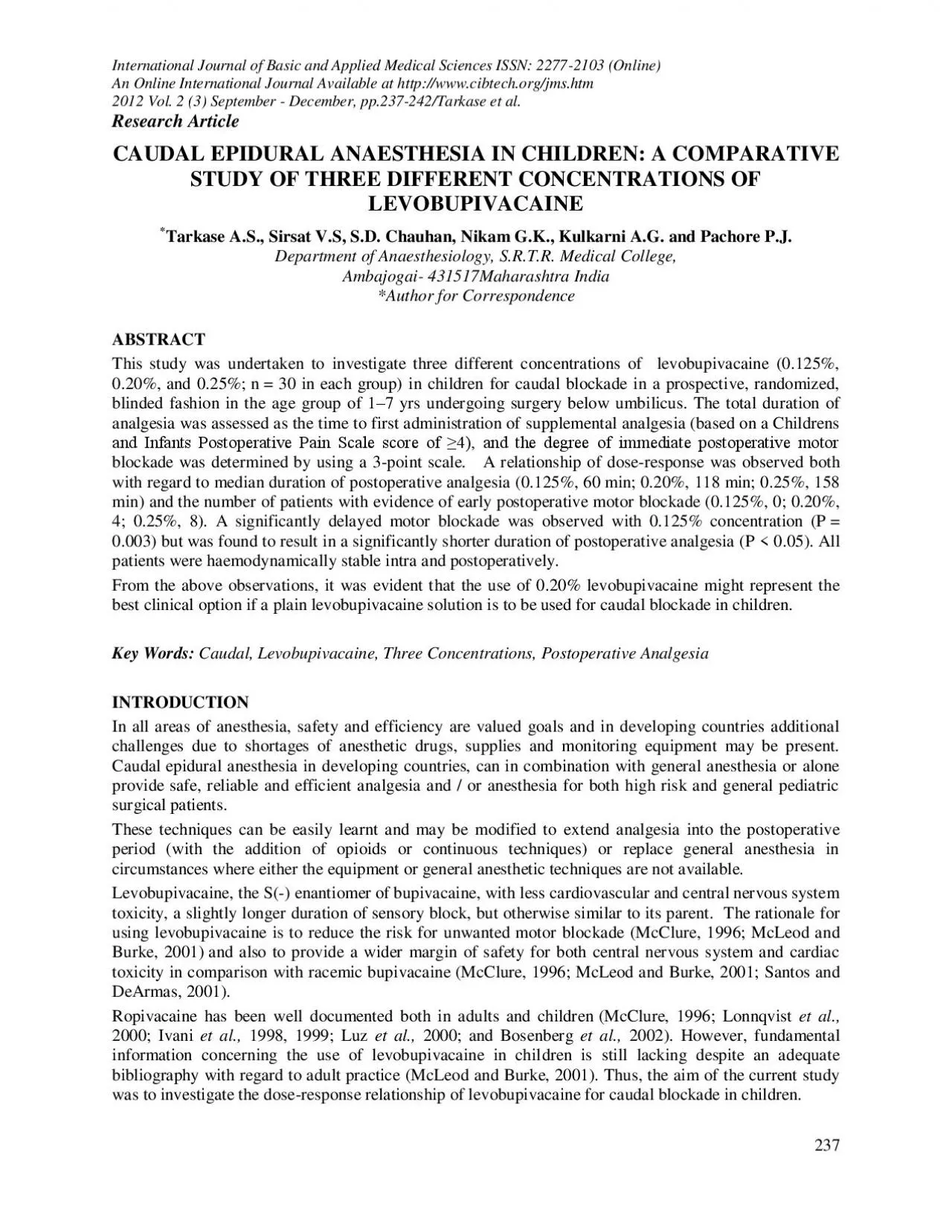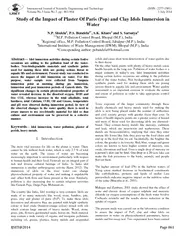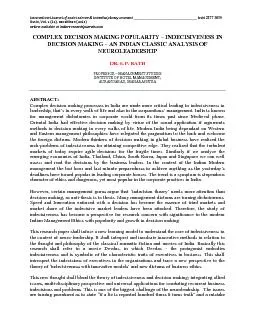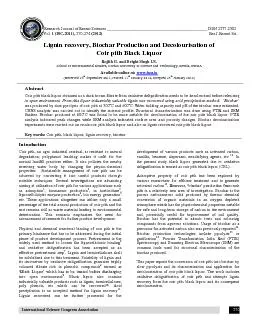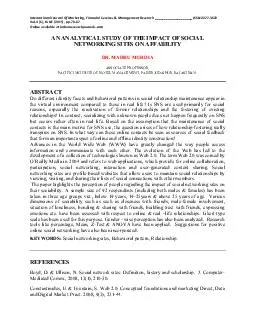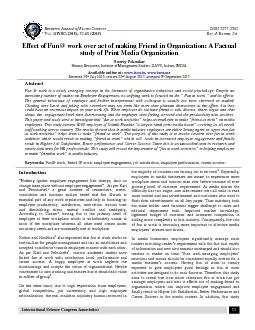PDF-International Journal of Basic and Applied Medical Sciences ISSN 2277
Author : roberts | Published Date : 2022-08-21
2103 Online An Online International Journal Available at httpwwwcibtechorgjmshtm 2012 Vol 2 3 September December pp 237 242 Tarkase et al Research Article 237 CAUDAL
Presentation Embed Code
Download Presentation
Download Presentation The PPT/PDF document "International Journal of Basic and Appli..." is the property of its rightful owner. Permission is granted to download and print the materials on this website for personal, non-commercial use only, and to display it on your personal computer provided you do not modify the materials and that you retain all copyright notices contained in the materials. By downloading content from our website, you accept the terms of this agreement.
International Journal of Basic and Applied Medical Sciences ISSN 2277: Transcript
Download Rules Of Document
"International Journal of Basic and Applied Medical Sciences ISSN 2277"The content belongs to its owner. You may download and print it for personal use, without modification, and keep all copyright notices. By downloading, you agree to these terms.
Related Documents

